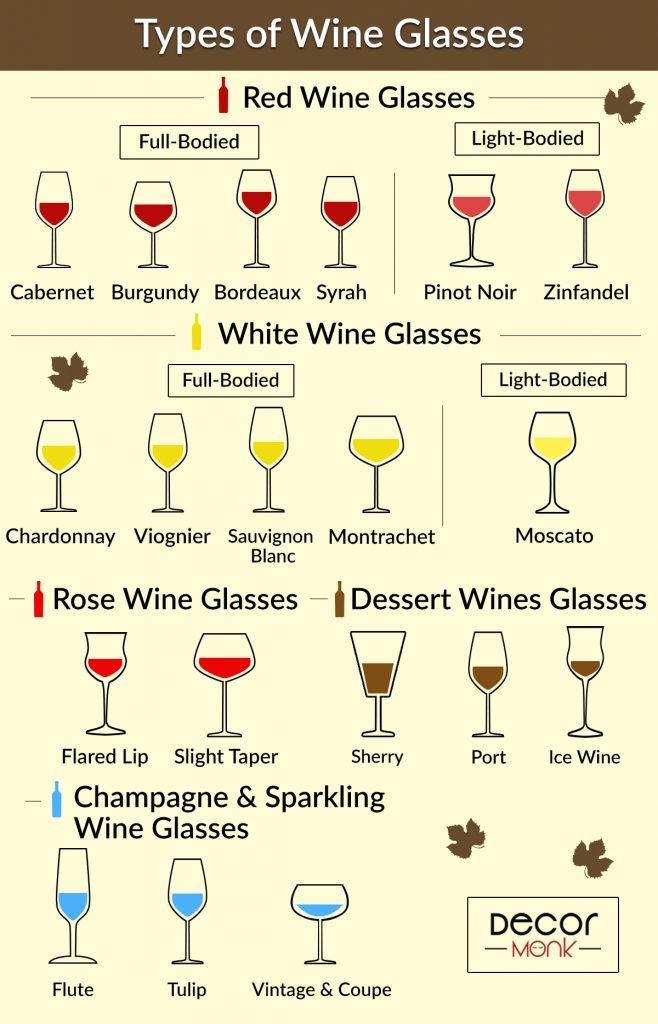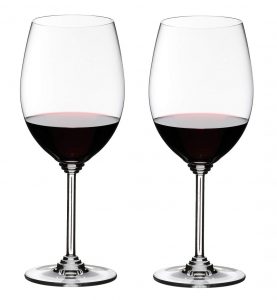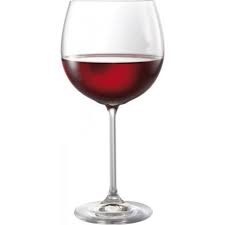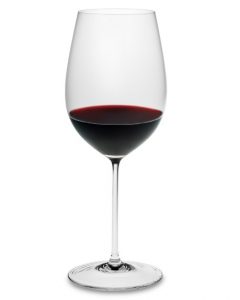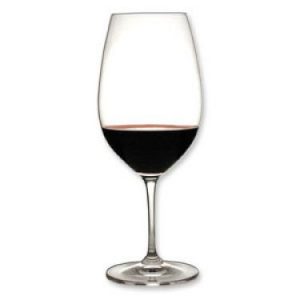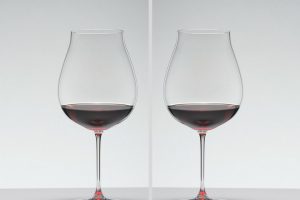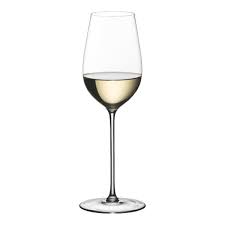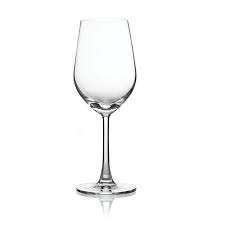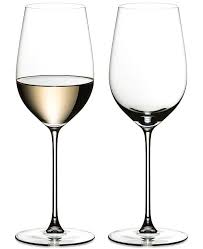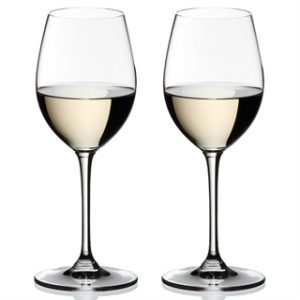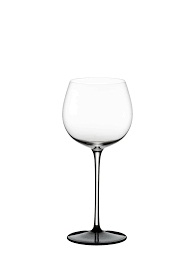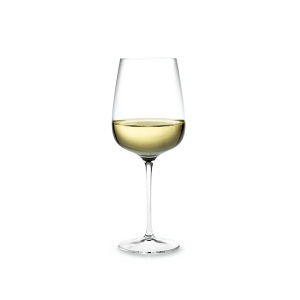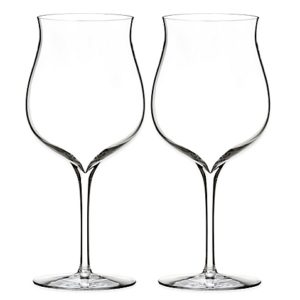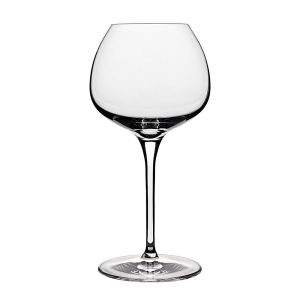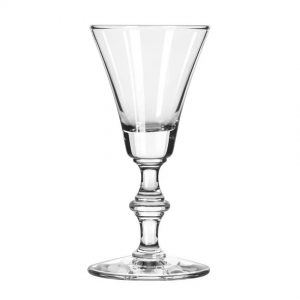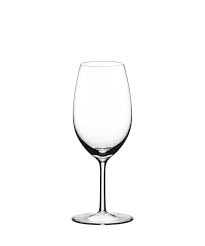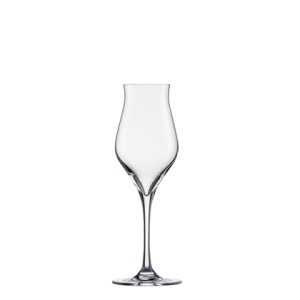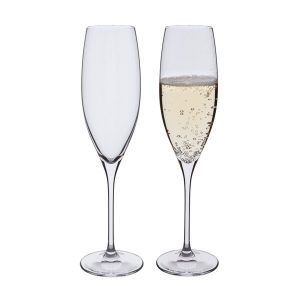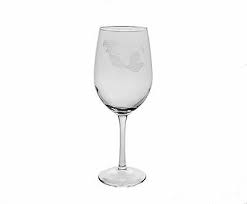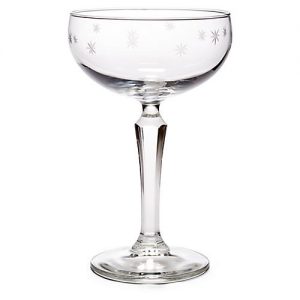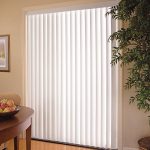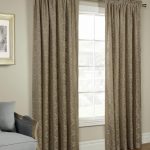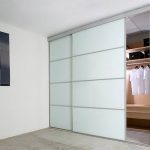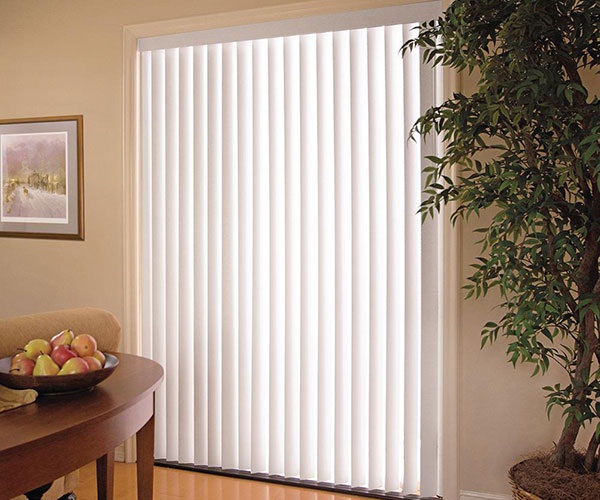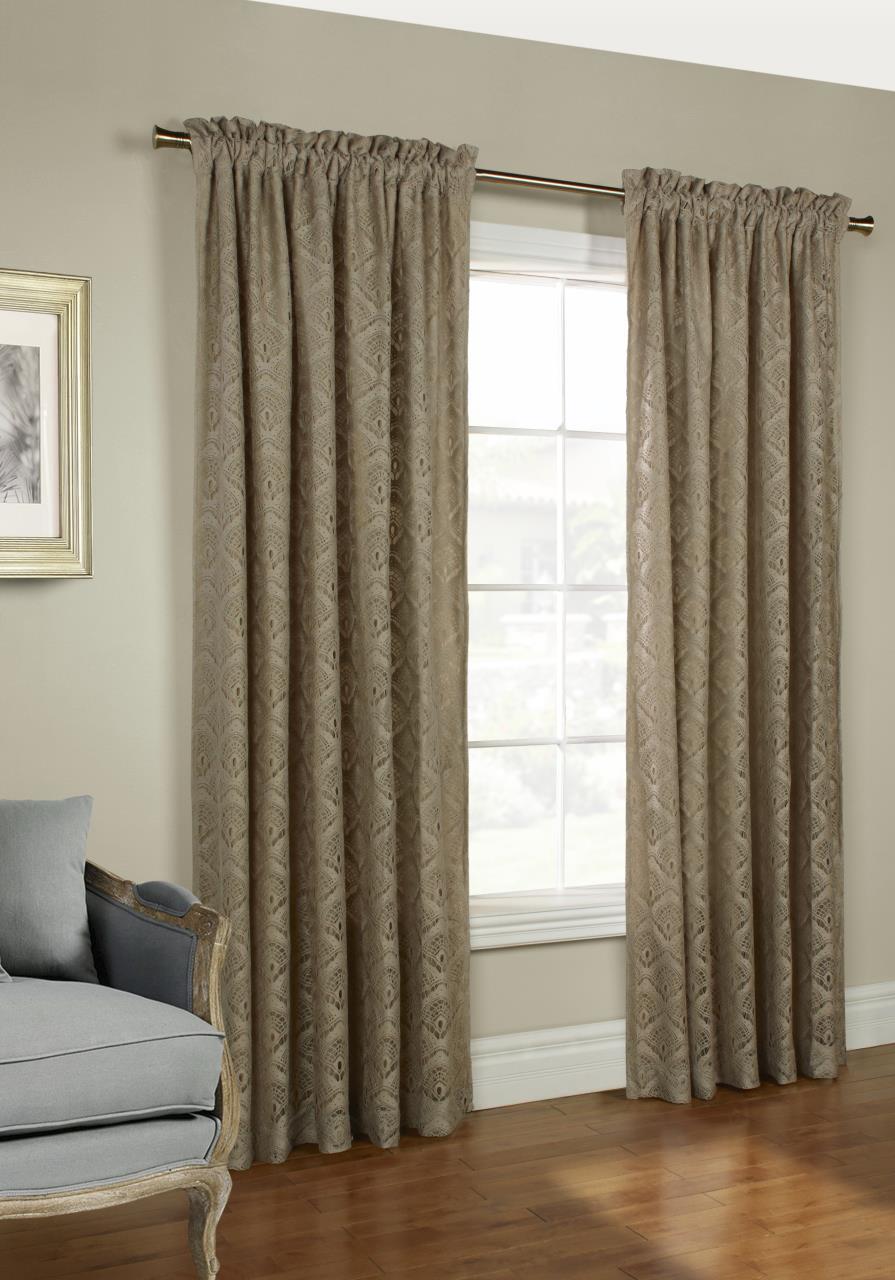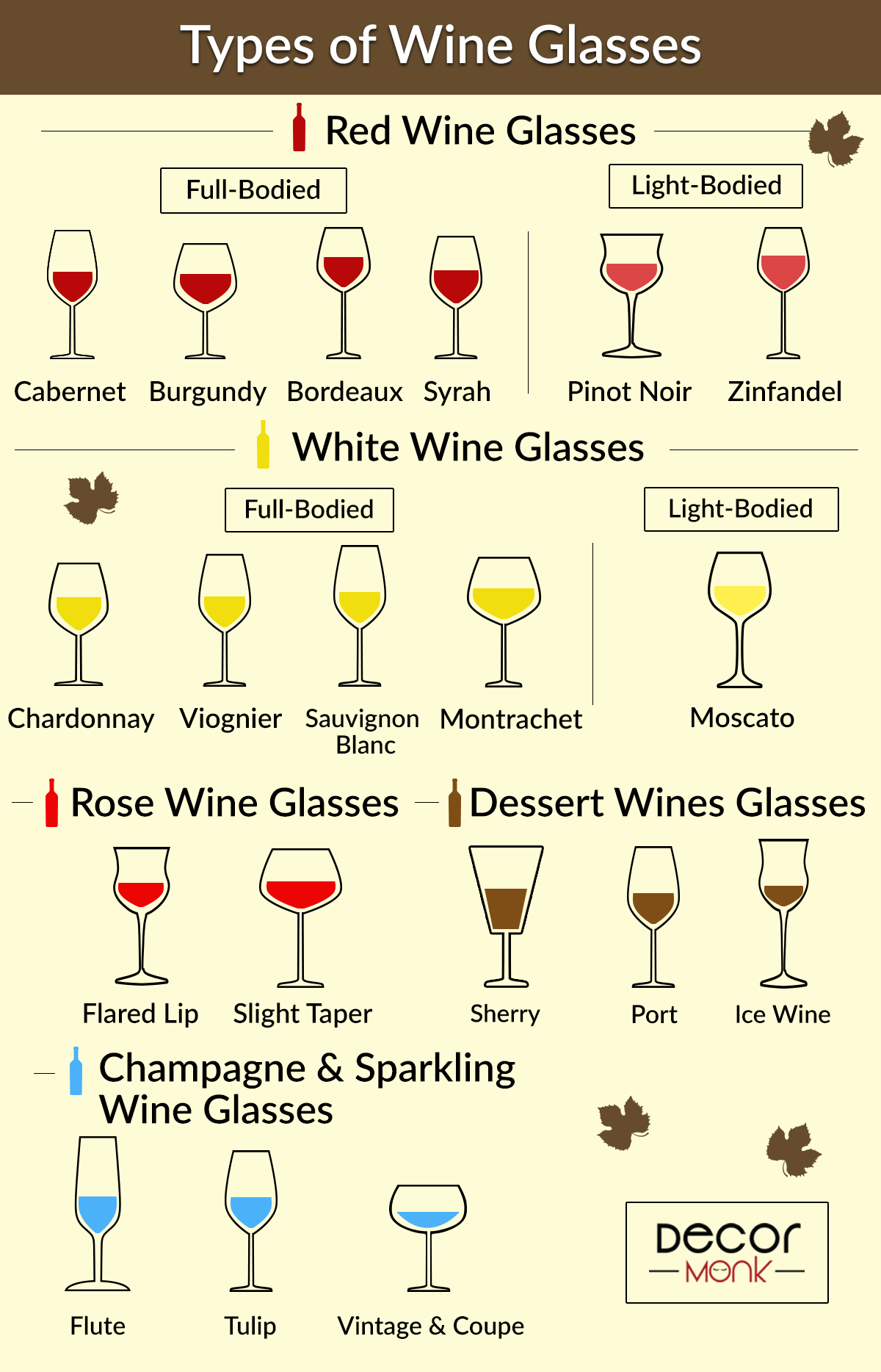Wine glasses of different shapes and sizes, with big or small bowls, large or short stems, gracing the rack of your living room, would undoubtedly add elegance and sophistication to your home décor. Serving wine in the glass it is suited for, gives you full credit as a host, besides providing your guests the privilege of enjoying a fulfilling drinking experience. A 2015 study conducted in Japan also validated this fact further by mentioning how the types of glasses used affected the vapor’s position and density, which in turn impacted its flavors and aromas.
Varieties of Glasses for Each Type of Wine
For red wine, tall glasses with a full bowl and large opening suits the best. The shape would make the vibrant drink look enticing when placed on the table, and also give it sufficient breathing space, bringing out its complex aromas distinctly.
For white wine, glasses with a smaller bowl are preferable. It would preserve its delicate aroma and fruity flavor well, besides maintaining its cold temperature.
For rose wine, glasses with a flared or slightly tapered lip are apt.
For dessert wine, small glasses with a tapered rim work well in bringing out its less intense flavors.
For champagne and sparkling wine, tall, slender, upright glasses with a long stem make for the perfect choice. The shape helps to retain the carbonation, giving the drink its bubbly appearance, also allowing one to taste the aromas at the very first sip they make.
White rose, sparkling wine, and champagne glasses have long stems to prevent the glass from getting warm when touched, helping the drink remain cool, as that is how they taste the best. Red wine glasses have stems that are neither too long nor very short.
Materials for Wine Glasses
The ones made of glass are the preferred choices for drinking at home, as well as in bars or restaurants. They are durable and cost-effective. However, if elegance is what you are aiming for, particularly at a formal party, then crystal glasses stand as a better option. The price could give you a pinch in your pocket.
Plastic, stainless steel, and silicone glasses are rare, used in picnics, outdoor party or a trip.
Types of Red Wine Glasses
Full-bodied red wines like Merlot, Cabernet, Malbec, and Shiraz require taller glasses with a bigger opening to help one experience their robust flavors and intense aroma. The light-bodied varieties like Pinot Noir and Zinfandel need slightly shorter balloon-shaped glasses with a wide base. This would help the strong aromas to escape, making the drink less intense.
Full-Bodied Red Wine Glasses
1. Cabernet
They are tall, having a broad base and a big bowl tapering slightly to the top. The stem of these glasses is of an average length. It is advisable to pour a smaller amount of drink rather than overfilling them to experience its taste and aroma in a better way.
Suited for: Cabernet Sauvignon, Shiraz, and other full-bodied wines
2. Burgundy
They have a full bowl that accommodates the delicate flavors well, while the thin rim makes drinking easier. The stems are short enough, to lessen the risk of the glasses from toppling. However, one can still hold them comfortably to swirl the wine with ease. Hence, the drink gets an increased exposure to air, allowing one to enjoy its taste to the fullest.
Suited for: Full-bodied wines like Burgundy and Barolo
3. Bordeaux
Bordeaux is the tallest of all red wine glasses having a smaller bowl in comparison to the other varieties. The tall size allows the drink to go to the end of your mouth instead of remaining confined to the tongue tip, exposing its complex aromas.
Suited for: Boudreaux, Syrah, Cabernet Sauvignon, Merlot, and other full-bodied drinks
4. Syrah
Its bowl size is broad enough to bring out the perfect balance between the sweet and bold flavors that the drink has.
Suited for: Syrah
Light-Bodied Red Wine Glasses
1. Pinot Noir
Their bowl is the widest of all wine glasses, helping one to swirl it with ease. They have a rim turned outwards, leading the flavors directly to the nose and tongue. The stems are shorter in comparison to other red wine glass types.
Suited for: Pinot Noir, and other light-bodied wines
2. Zinfandel
They are shorter than the Bordeaux glasses with a smaller bowl and a thin rim. The shape allows the wine to reach directly to the center of the tongue, letting one experience its intricate flavors.
Suited for: Zinfandel
Types of White Wine Glasses
The bowl size for full-bodied white wine glasses like Chardonnay and Viognier is smaller than the red wine glasses but bigger than the light-bodied white wine ones to help preserve the aroma well. Light-bodied white wines such as Pinot Gris and Moscato need small glasses with a narrow shape helping to keep the wine cool.
Full-Bodied White Wine Glasses
1. Chardonnay
Its shape is similar to the Pinot Noir glasses though smaller in size. It has a wide bowl, large opening, and a slightly tapered narrow top. Because of its big opening, the wine goes up to the sides and tip of the tongue. Thus, the palate can identify the sweetness at an instant.
Suited for: Chardonnay, Viognier, Semillon
2. Viognier
It has a small bowl size, giving the wine lesser exposure to air, also preserving its sweetness that it is cherished for. The broad base of the glasses gives them stability, lessening their chances of getting knocked down.
Suited for: Viognier
3. Sauvignon Blanc
This glass is comparatively taller than other white wine glasses, with a long stem. Its thin bowl brings out its distinct fruit and floral aromas prominently. The shape is such that it transfers the wine directly to the middle of the palate.
Suited for: Pinot Grigio, Muscat Blanc, Loire, white Bordeaux, Chenin Blanc, Fume Blanc, Muscadet, and Vinho Verde
4. Montrachet
The flavors of Montrachet are a little complex than other white wines. Hence, the glasses devoted to this drink have a large bowl, with a wide opening to give it sufficient exposure to air so that the taste and aroma may open up well.
Suited For: Montrachet, Corton-Charlemagne, Meursault
Light-Bodied White Wine Glasses
1. Moscato
They have a wide mouth enabling the wine to flow to the sides of the tongue so that one can experience Moscato’s sweet taste to the fullest.
Suited for: Moscato
Types of Rose Wine Glasses
2. Flared Lip
Young rose wine has a sweet taste, and the flared lip helps in enhancing this flavor to the fullest as the wine reaches the tip of the tongue that has maximum sensitivity to sweetness.
Suited for: Young rose or white wine
3. Slight Taper
They have a short bowl with a round bottom and a slightly tapered lip.
Suited for: Full-bodied, mature rose wine
Types of Fortified and Dessert Wines Glasses
1. Sherry
They are small in size with a narrow mouth and a long stem. The small opening lessens the evaporation rate helping to preserve the aroma.
Suited for: Sherry and cordial
2. Port
They are a shorter version of the Bordeaux glasses, having a thin, elegant looking body and a narrow mouth. These glasses have a capacity of bearing 6 to 12 ounces of wine, though it is better to full it halfway to get a complete essence of its aroma.
Suited for: Port and other dessert wines
3. Ice Wine
Their rim is highly tapered, and the design makes it convenient for one to swirl the drink, though the wine-air ratio remains balanced. They have a smaller bowl size, which helps to bring out its acidic flavors, preventing its sweetness from dominating.
Suited for: Ice and other dessert wines
Types of Champagne and Sparkling Wine Glasses
1. Flute
Thin and skinny with a narrow, upright bowl, and a medium length stem.
Suited for: Young champagne or sparkling wine like Asti, Franciacorta, Prosecco, and Cava
2. Tulip
They have a slim base with a broader bowl and a narrow opening. Because of its thin top, there is less scope for the carbonation to escape hence transferring the aromas to the tongue first instead of letting them reach the nose directly. A special small-sized tulip glass named copita is apt for dessert sherry, served a little chilled.
Suited for: Champagnes like Asti, Cava, Franciacorta, and Prosecco
3. Vintage and Coupe
These are short glasses with a full bowl, popularly used during the 1920s for serving dessert champagne, having an increased amount of syrup. Though elegant, the wide bowl size allows increased contact with air, making the champagne appear less bubbly, also robbing away its aroma. Hence, their popularity at present has declined.
Suited for: Sweet champagne and sparkling wines like Prosecco and Cava.
Getting a separate glass for every wine could indeed make it an expensive affair. Instead, you could keep two or three glasses handy and use them for wines sharing common features. For instance, a narrow, slender glass would do well for most varieties of champagnes or sparkling wine, while full bowled tall glasses suit strong red wine the best.

